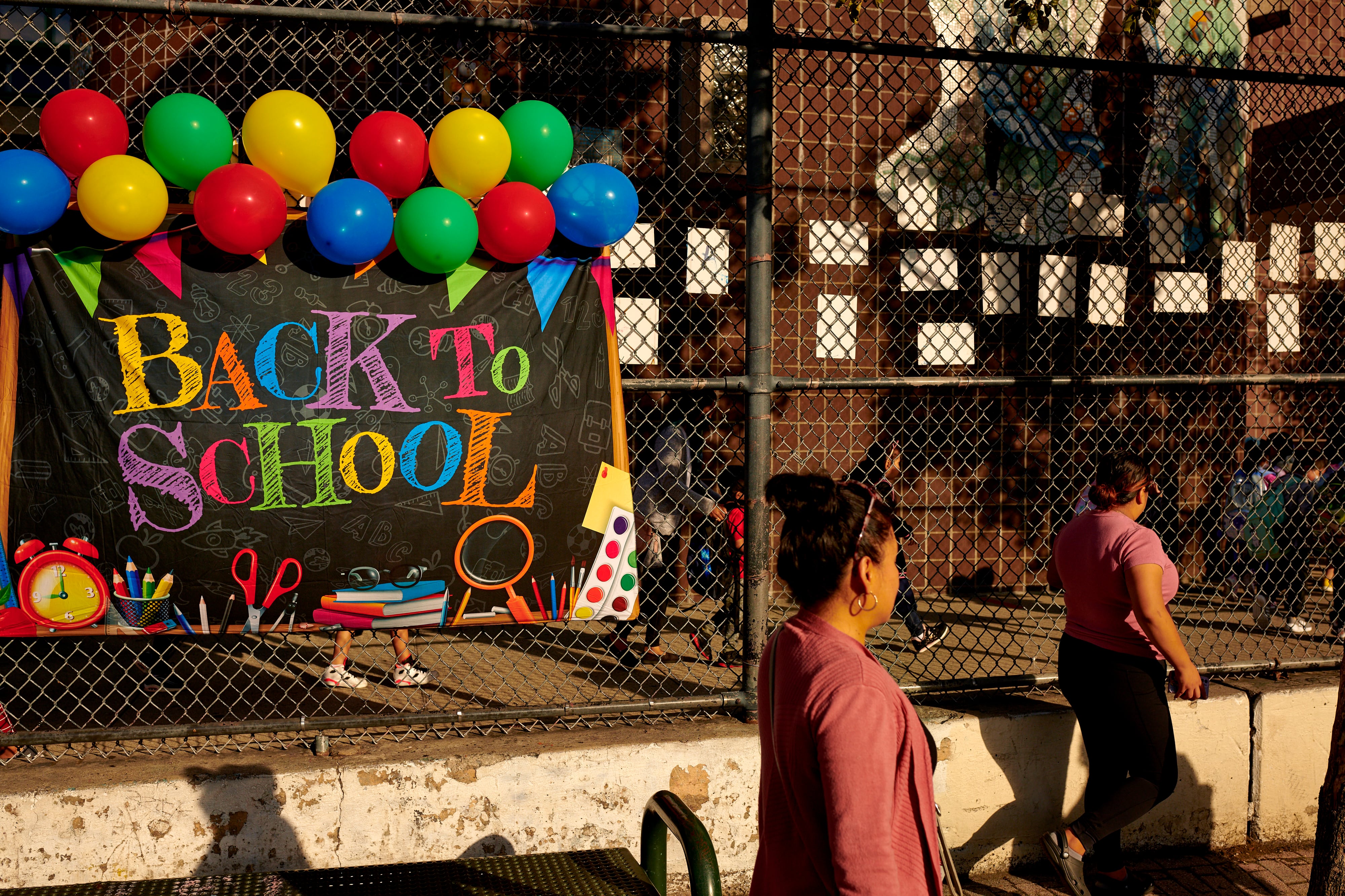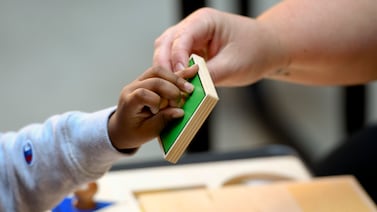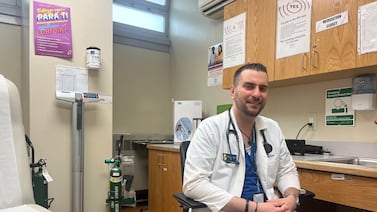Sign up for Chalkbeat New York’s free daily newsletter to keep up with NYC’s public schools.
More than 900,000 New York City public school students are slated to resume classes on Thursday with the customary mix of excitement, jitters, and joy.
In recent years, one acute crisis after another has overshadowed the start of classes, from chaotic efforts to restart in-person classes during the height of the pandemic to a bruising battle over budget cuts and an influx of asylum seekers that began last summer.
This year is proving to be no exception in the nation’s largest district: Families and educators are bracing for a school bus driver strike that could affect some 80,000 students, including many of the city’s most vulnerable. Union officials promised that the first week of service would not be interrupted, but the threat of a strike still looms.
Climate-related issues also affected this year’s start, just as they impacted the end of last school year. The National Weather Service issued a heat advisory for Thursday, forcing schools to limit outdoor activities between 10 a.m. and 6 p.m, school officials said.
But it’s not just acute challenges facing the city as the school year resumes.
Thorny long-term enrollment and budget issues that have been simmering for years could also come to a head this year with a fiscal cliff looming.
It will also be a pivotal school year for schools Chancellor David Banks, as his signature initiative to overhaul literacy instruction starts rolling out.
Here are five big issues we’ll be watching closely as this critical school year begins:
Asylum seekers continue arriving
The influx of asylum seekers to New York City that began last summer has shown no signs of abating. The Education Department has enrolled an estimated 21,000 newly arrived students since last summer, including 2,500 since this July.
There’s plenty of room in city schools: K-12 enrollment has fallen by more than 120,000 over the past five years.
And educators and families across the city have mobilized over the last year to welcome the newcomers with everything from basic needs to language support.
But lingering challenges continue to undercut the city’s efforts to support the newcomers, starting with gaps in the process for quickly enrolling them in school.
And once they arrive, many won’t attend schools with bilingual teachers. A report last year from the Independent Budget Office found that under half of the schools that enrolled asylum seekers last year had a certified bilingual teacher on staff, reflecting a long-running shortage.
Banks has said new efforts are in the works to step up recruitment of bilingual teachers.
A fiscal cliff looms
New York City schools have been profoundly reshaped by an infusion of $7 billion in federal COVID-19 relief funds meant to help school districts climb out from under the shadow of the pandemic. Among the big ticket items entirely or largely funded by that money are:
- Summer Rising, the city’s free summer school program combining recreation and academics for roughly 100,000 kids each of the last three summers. The program has proven so popular that 45,000 families were turned away this year.
- 500 new social workers spread across the city to help address mounting mental health challenges.
- A program to shore up school budgets after enrollment losses. Prior to the pandemic, when schools lost students, their budgets were slashed accordingly. But the city has spent hundreds of millions of dollars in federal aid to blunt the impact of those budget cuts.
All of those programs and more will be on the chopping block next school year, since the federal relief money must be spent by October 2024. That will likely spur some fierce and thorny battles over prioritizing existing money, or finding new sources of funding.
Banks’ signature initiative takes off
Banks has largely defined his tenure around a single goal: improving the teaching of literacy.
At the center of that goal is a sweeping initiative to overhaul the curriculum that schools use to teach reading in an effort to standardize practices across schools and abandon approaches that have been increasingly discredited. Fifteen of the city’s 32 community school districts will start this year using one of the three new pre-approved curriculum options, with the rest following next year.
But mandating new curriculums is just the first step. Changing something as deeply ingrained as how schools teach reading will require buy-in from staff and ongoing supervision and training. Officials have promised a robust training plan, but recently scrapped the department’s large in-house literacy coaching program and have so far largely outsourced professional development to curriculum publishers and other outside groups.
It’s not just elementary literacy in Banks’ crosshairs: the Education Department is also mandating a ninth-grade algebra curriculum at some high schools, as well as an early childhood curriculum, and First Deputy Chancellor Dan Weisberg said Wednesday that the agency plans to look “very, very closely” at the curriculums used in all core classes across all grades in the coming years.
Teachers: We want to hear from you about what kind of training you are receiving — and need — to effectively use the new curriculum.
Enrollment and attendance challenges linger
The influx of asylum seekers over the past year helped slow the enrollment bleeding, but the long-term trends are unmistakable: New York City’s public schools are losing students.
The reasons are complex, including a drop in young students entering school during the pandemic, and a surge in families leaving New York City for more affordable destinations.
But the impact for the school system is profound. As of last year, the Education Department had 201 schools with fewer than 200 students. That’s more than twice the number of tiny schools 15 years earlier.
Since school budgets are largely tied to enrollment, ultra-small schools often struggle to offer enough courses and extracurricular variety to function. In the long run, there will likely be increasing pressure on the city to consider closures or mergers.
It’s not just enrollment patterns reducing the number of children in city schools on any given day: Chronic absenteeism has also spiked, jumping from an average of around 25% before the pandemic to 36% last school year (down slightly from 41% the year before), officials said. Chronic absenteeism is closely linked to adverse academic outcomes, and the city’s efforts to improve attendance could be a core part of efforts to recover from pandemic losses.
NYC students, staff face ongoing academic, emotional challenges
The ongoing effects of the COVID-19 pandemic and disrupted years of schooling continue to reverberate, touching everything from standardized test scores, to elevated levels of absenteeism, to teachers’ and students’ mental health, to spikes in youth violence.
The city has launched a grab bag of both big ticket and smaller scale programs to address those sweeping challenges, some of which will be at risk when federal stimulus money expires next year.
But others are still getting off the ground, including a telehealth initiative to expand therapy access to teenagers. Banks said Wednesday that the program will roll out by the end of 2023 and will be free and open to all city teenagers ages 13 to 17.
In many ways, all of the city’s big educational initiatives, from the literacy curriculum overhaul to efforts to preempt and prevent youth violence can be seen through the lens of addressing the lingering scars of the pandemic — and recovery remains a core challenge for the school system.
Michael Elsen-Rooney is a reporter for Chalkbeat New York, covering NYC public schools. Contact Michael at melsen-rooney@chalkbeat.org.






